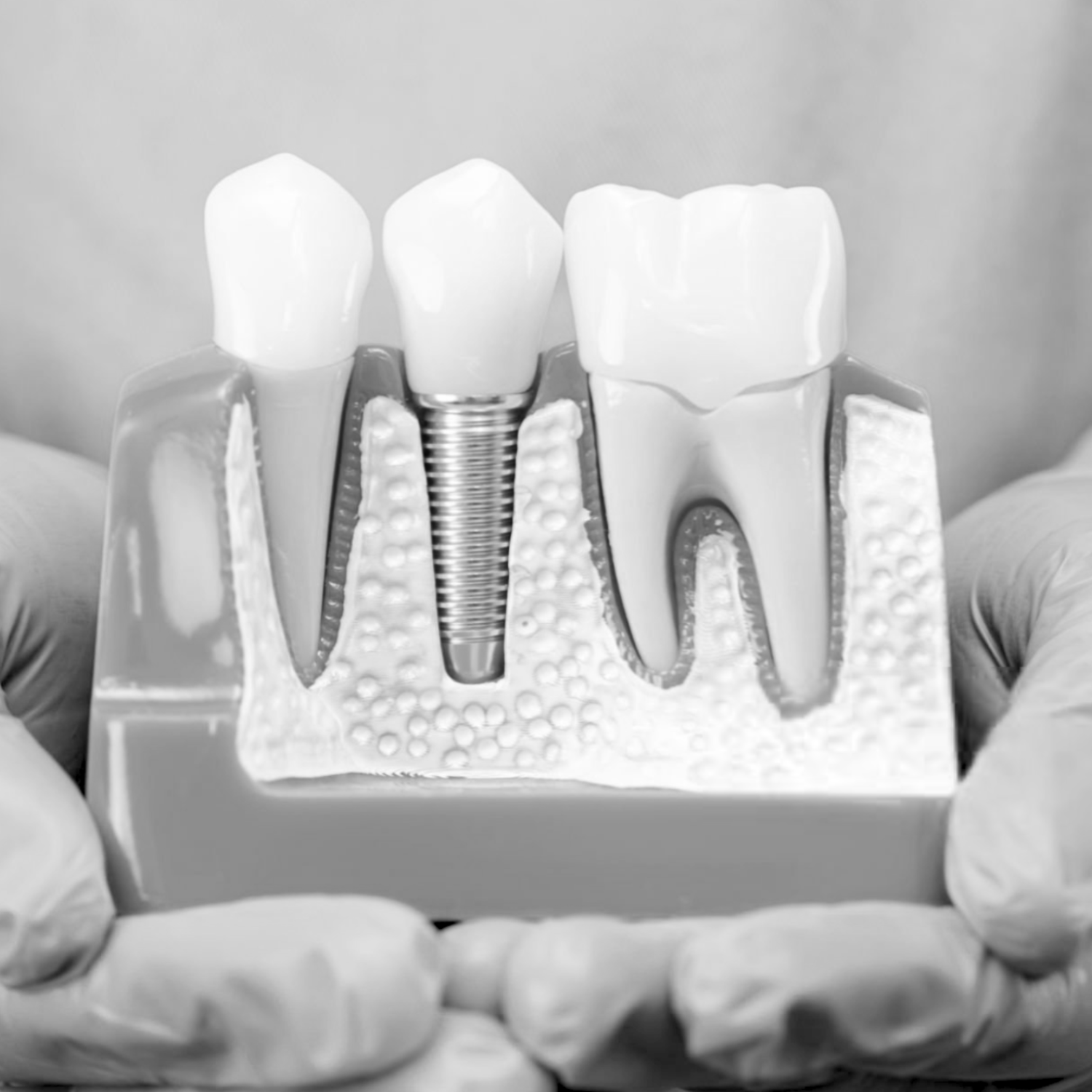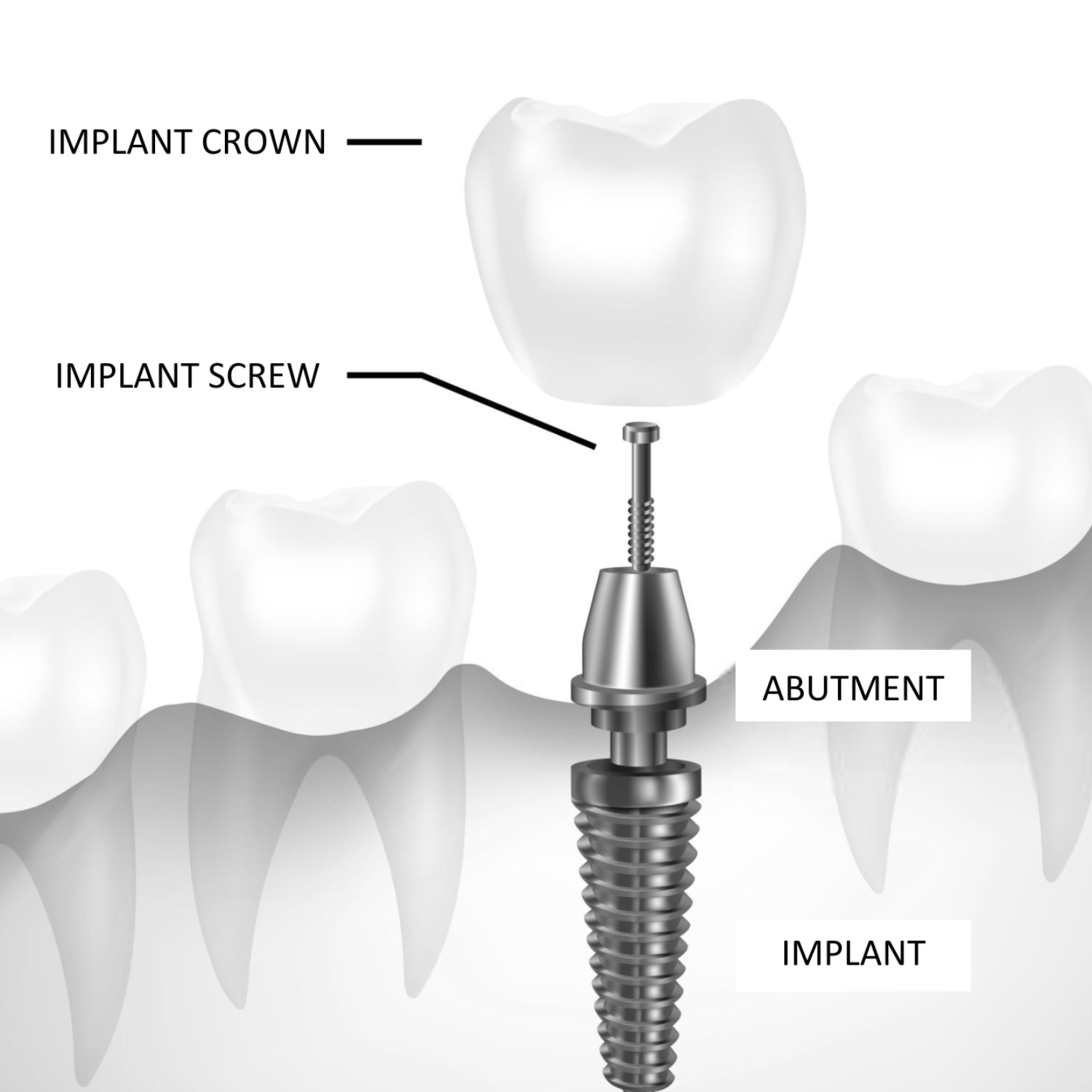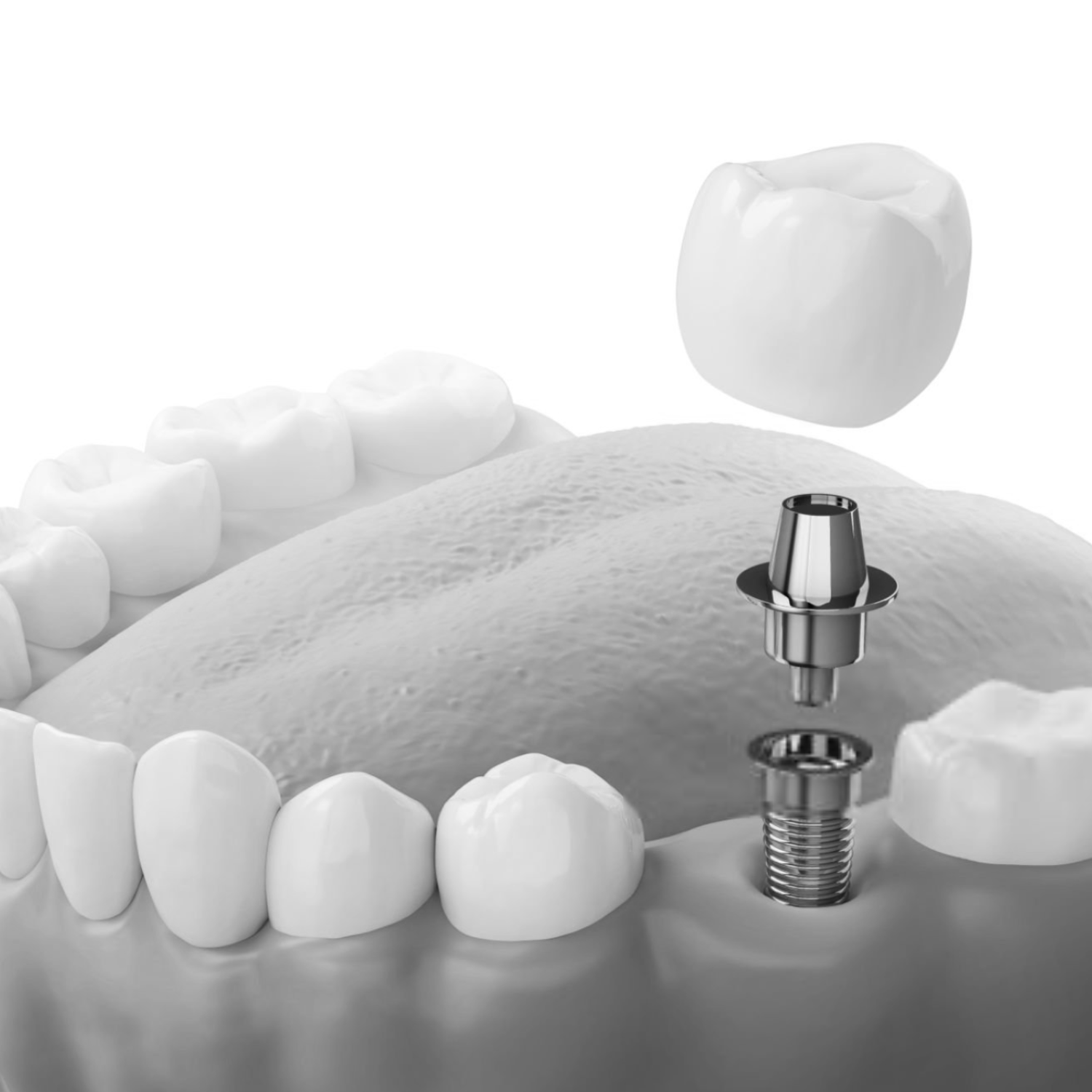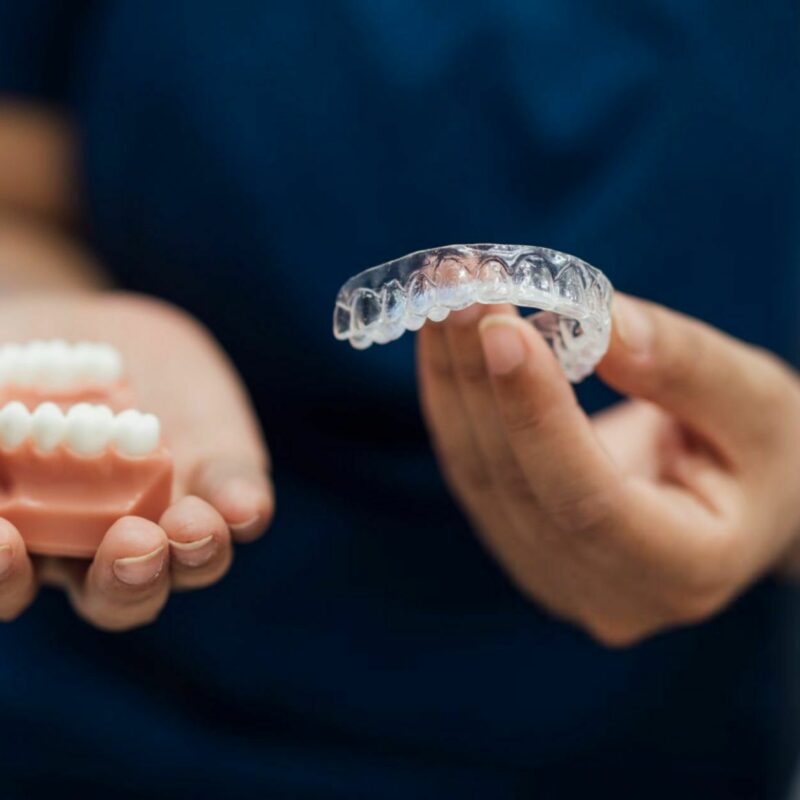Dental implants are a highly reliable way to replace missing teeth, providing stability, function and a natural appearance. The process involves several stages, each designed to ensure long-term success. This guide explains what happens at each step, why it is necessary, and what patients can expect throughout treatment.


Initial Assessment and Planning
Implant treatment begins with a detailed assessment to ensure the site and surrounding tissues are suitable. This stage is essential for identifying any complications and planning a predictable outcome.
A thorough evaluation may include:
- Clinical examination of the gum health, bite and adjacent teeth
- Digital X-rays or a CT scan to assess bone density and anatomy
- Review of medical history and underlying conditions
- Discussion of risks, healing expectations and potential alternatives
There are many implant systems available, each with different shapes and sizes. Part of the planning stage is selecting the most suitable implant based on the individual case.
If issues such as active gum disease, infection or reduced bone volume are present, they must be addressed before treatment can begin.
Preparatory Procedures (If Required)
Some patients require additional steps to create a stable foundation for the implant. These may include:
If the failing tooth is still present, it must be removed before placement.
Where bone volume is limited, grafting may be necessary to support the implant. In the upper jaw, a sinus lift may be required if the sinus sits too close to the planned implant site.
Healthy gums are essential for long-term implant success. Any inflammation or infection must be treated beforehand.
When a front tooth is being replaced, a temporary solution may be used for appearance and comfort. In some situations, no temporary tooth is required.
Dental Implant Placement
Once the mouth is healthy and the site prepared, the implant can be placed. This is a minor surgical procedure carried out under local anaesthetic, with the option of sedation if needed.
The process typically involves:
- Making a small incision in the gum
- Drilling a precise space in the bone
- Inserting the titanium implant
- Closing the gum over the implant to heal
- The appointment usually lasts 1–2 hours. Modern techniques make the procedure generally comfortable, with most patients reporting only mild soreness afterwards.
- Platelet-rich fibrin (PRF) may also be used to support healing. In some cases, bone grafting or a small sinus lift is performed during the same appointment.
Healing and Osseointegration
Over the next 3 to 9 months, the implant fuses with the jawbone in a process called osseointegration. This biological bonding is essential for long-term stability.
Key points during this period:
- The implant is at its weakest during the first six weeks
- A temporary tooth may be used for appearance
- A soft-food diet may be recommended initially
- Excellent oral hygiene is essential
- Regular check-ups allow progress to be monitored
- X-rays may be taken to evaluate integration
Abutment Placement
Once the implant has securely integrated, a small connector piece called an abutment is fitted. This involves reopening the gum under local anaesthetic:
- The implant is exposed
- The abutment is attached
- The gum is left to heal around it for 1–2 weeks
In some cases, this step is not required because the abutment can be placed at the time of implant insertion.

Final Crown Placement
After the gum has healed, impressions or digital scans are taken so that a custom crown can be made to match the surrounding teeth.
Two main types of implant crowns are used:
Screw-Retained Crowns
- Easily removed for maintenance
- Less risk of irritation under the gum
- A small access hole may be visible but is covered with filling material
Cement-Retained Crowns
- Slightly better aesthetics
- More difficult to remove if repairs are required
- Both options are widely used, and the choice depends on clinical factors and the long-term maintenance plan.
Aftercare and Maintenance
Dental implants can last many years with the right care. Maintenance is essential because implants, like natural teeth, are vulnerable to gum inflammation and plaque build-up.
Recommended long-term care includes:
- Brushing twice daily and cleaning between the teeth
- Routine dental check-ups
- Regular hygiene appointments — often every 3 months initially
- Avoiding smoking
- Wearing a night guard if you grind your teeth
- Monitoring the implant, crown and gums over time
Some components, such as screws or crowns, may require replacement in the future, even when the implant itself remains stable.
Summary
This guide outlines the general steps involved in implant treatment, although each patient’s situation is different. Planning, healthy tissues, careful surgical technique and ongoing maintenance all contribute to long-term success.
For further information or personalised advice, patients can contact the practice by phone or email.

Vatche Kassardjian - Specialist in Prosthodontics
More
from the blog
Blog /Advice
Is High-Fluoride Toothpaste Safe?
Benefits, Risks, and How It Protects Against Tooth Decay
Read moreBlog /Advice
Nutritional Effects on Oral Surgery Outcomes
Preparing Your Body for Faster Recovery
Read moreBlog /Advice
PRF facials - Platelet-Rich Plasma
Learn how platelet-rich fibrin treatments naturally restore youthful skin
Read moreBlog /Advice
Dental Composite Fillings: Process, Benefits & What to Expect
Find out what to expect during a dental composite filling procedure at our Highgate, North London practice
Read more





